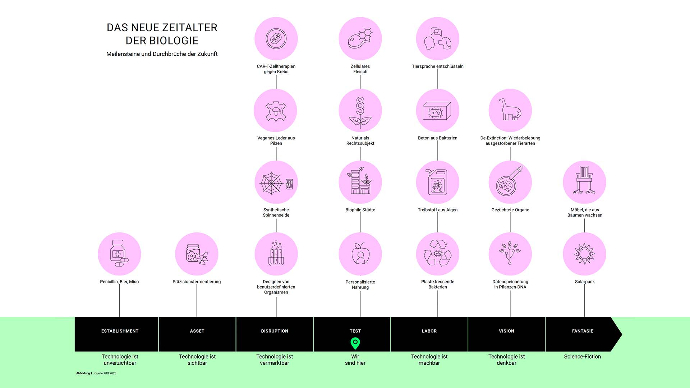The future of the economy lies in the bioeconomy, a field that uses biological knowledge to meet the basic needs of humanity. These findings from research into living matter not only promise an economic boost, but could also help to overcome some of the most pressing global challenges.
Opportunities and challenges
A new report from Schmidt Futures, the philanthropic initiative of ex-Google CEO Eric Schmidt, emphasises the urgency of investing billions of dollars in the development of biologically produced materials, medicines, fuels and food. Instead of converting petroleum into chemicals, energy and materials, manufacturers should use microbes, biomass and other biological, renewable resources as raw materials. The aim is to use biotechnology and genetic engineering to produce new materials, develop new food sources and utilise inexpensive, natural raw materials, such as algae.
Milestones and opportunities
In the future, biotechnology will make many things possible that were previously unimaginable. They include breakthroughs such as the cultivation of human organs in the laboratory, the production of fuels from algae and sunlight, and the use of bacteria to decompose plastic waste. Other innovations are the storage of digital data in plant DNA and the production of concrete from bacteria. There is even ongoing research into the revival of extinct animal species.
 |
 |
The advance of biotechnology
Biotechnology has made significant progress in recent years. Technologies such as CRISPR, TALEN and modular cloning tools, in particular, have made it possible to sequence and process DNA faster and more efficiently than ever before. This has considerably accelerated the process of moving from model to construction, testing and revision to the final product.
From the lab to market maturity: the role of basic research
Decades pass between the initial ideas, laboratory research, first field tests and prototypes and the final product Today’s start-ups are implementing ideas that were developed ten or twenty years ago. Research forms the basis. If you want to know where the age of biology is taking us and what will be possible in the future, you need to understand what is happening in basic research today.
The vision of a sustainable future
We are currently standing on the threshold between an industrial and a biological economy. The long-term vision of the bioeconomy is a circular economy with bio-based manufacturing processes and renewable materials. This is the only way to ensure a sustainable economy that does not exhaust our planet’s capacity in the long term. It includes the production, processing, refinement and marketing of biological resources such as plants, microorganisms and biological waste.
For in-depth analysis and more comprehensive insights, please read the full GDI study “The Age of Biology – How the relationship between humans, nature and technology is changing”. It can be downloaded free of charge at gdi.ch/biologie .